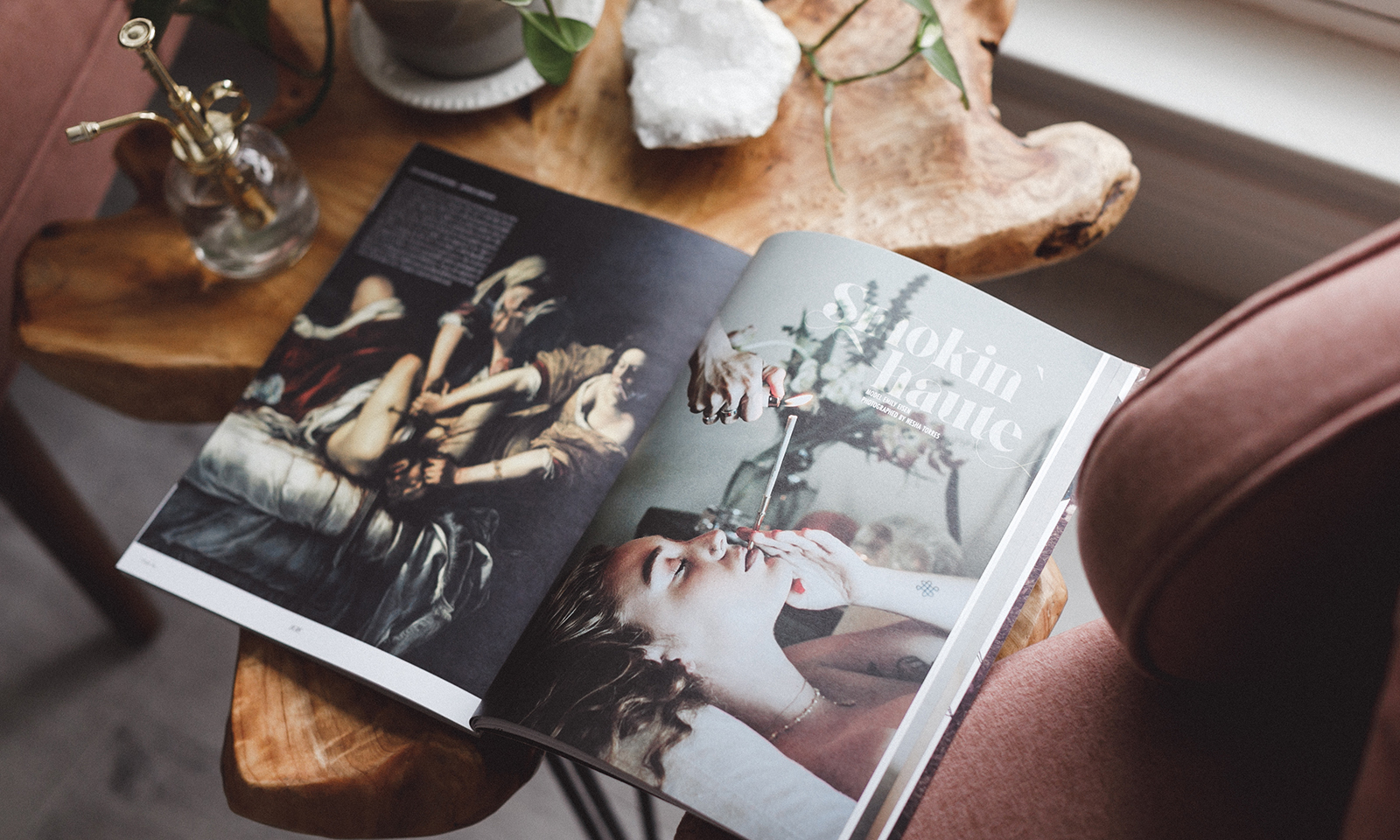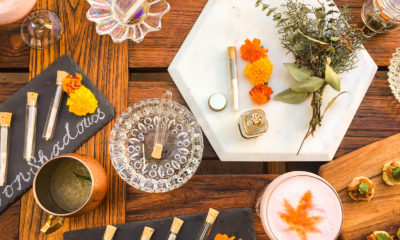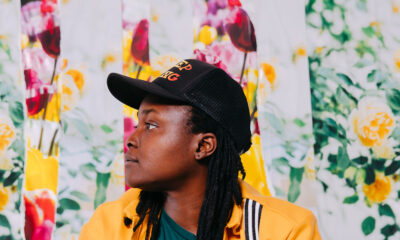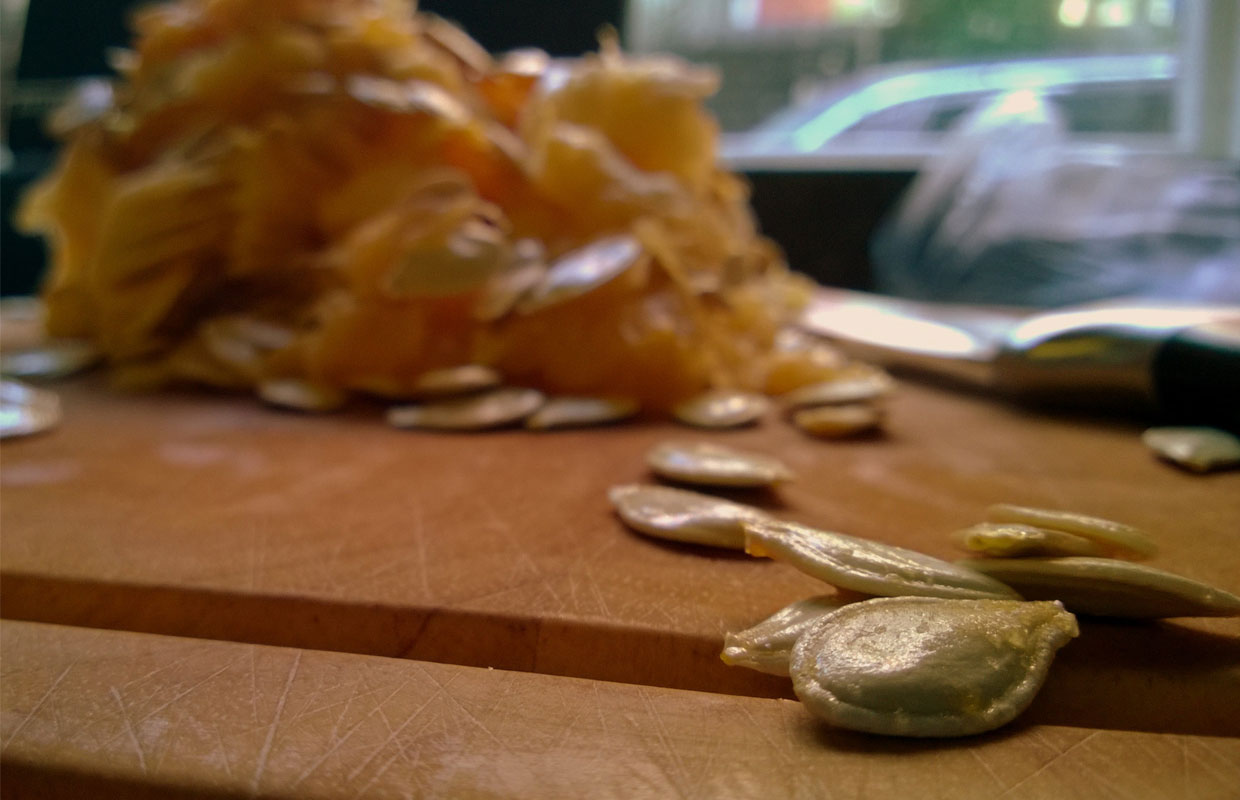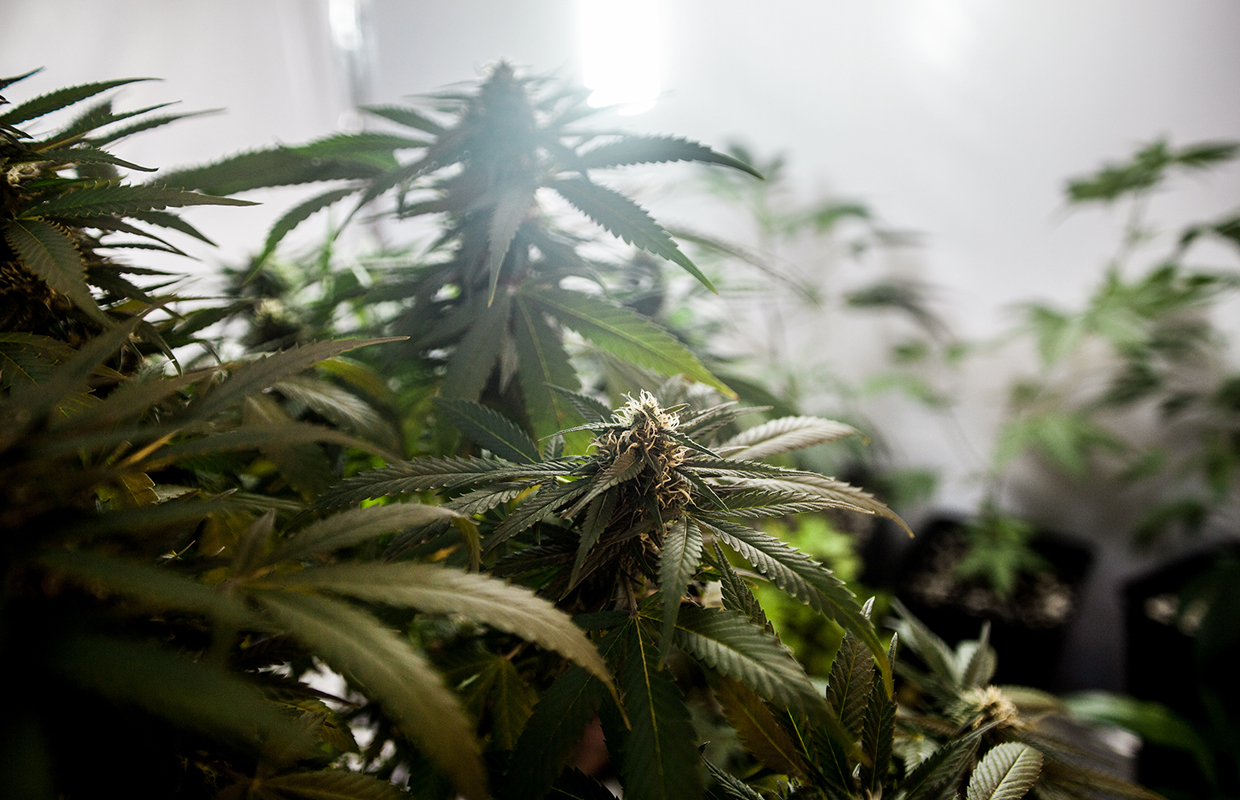The Future of Cannabis Media Is Female
This isn’t a rebrand, it’s a reality that women editors are building for themselves.
Tera Patrick, adult film star and apparent marijuana enthusiast, smiles coyly out from the cover of the August 2008 issue of High Times, a “sex, nugs and rock ‘n’ roll special,” with a pile of bud strategically placed in front of her bikini-clad cleavage.
On this cover, Patrick epitomizes the archetype that women in weed have pointed to, again and again, as an example of the sexy, sexist specter they’ve been working to exorcise for years. In the brave new world of legal cannabis, women are insisting that their place is in the boardroom or out in the grow, not behind the booth.
The women at the helm of the buzziest new cannabis media entities are no exception — and in their roles as editors, they can set their own agenda for how women are portrayed in cannabis media. In the last three years alone, new publications Miss Grass, Gossamer, MJ Lifestyle, Dope Girls Zine, EstroHaze and Broccoli have launched, boasting women at the top of the masthead.
“It quickly kind of dawned on us that women really weren’t being properly represented in the space, and it was really hard for real women to get any information on cannabis other than, ‘bongs and thongs,’” says Jennifer Skog, founder and editor in chief at MJ Lifestyle.
Skog says she first noticed this disparity when she began working with cannabis brands as a photographer, and that’s what inspired her to found (and fund) a print magazine of her own. Now, MJ Lifestyle is working on its third issue, which Skog says will focus on movers and shakers in the world of cannabis policy.
“We saw a clear vision that, wait, we can actually change the perspective of how women are portrayed in and out of the industry,” she says.
A Targeted Audience
These female-centric publications want to insert more nuanced portraits of women in weed: the mother, the entrepreneur, the patient, the educated and elevated consumer. Over and over again, the women Cannabis Now spoke to talked about using their platforms to empower women, build a community of women and illuminate women’s real experiences — goals that are par for the course for an Allure, a Cosmopolitan or an O Magazine, but are seemingly absent from previous cannabis media consideration.
Elise McDonough, who spent 15 years at High Times wearing a variety of hats including production coordinator, graphic designer and that of the magazine’s first-ever edibles editor, says there’s a reason for this absence: intended audience. According to McDonough, High Times cultivated an outlaw-chic brand and sold best where cannabis laws were harshest. Its targeted audience was underground growers, who were overwhelmingly male.
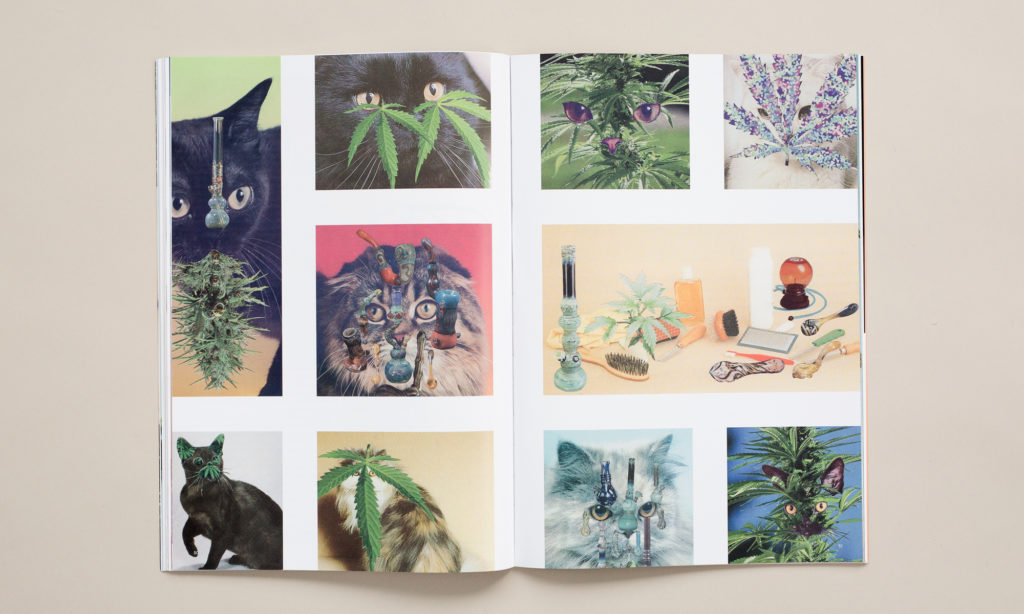
“The reason that many women weren’t involved in the industry when it was illegal was because they’re primarily the caregivers for their children,” McDonough says. “If they got locked up or something bad happened to them, it would seriously, negatively impact their families and that’s a risk a lot of women just can’t take… In the absence of those kinds of risks, we’re going to see women be able to thrive [in cannabis] as they do in other industries.”
Now, as legalization takes hold across the United States and around the globe, women are able to engage with cannabis in an unprecedentedly open way, and women-centric publications want to be there to guide them down that path.
“We’re creating sort of these gateways and onramps to say, ‘Oh, you know, come sit with us!’” says Stephanie Madewell, an editor at Broccoli Magazine. Founded by former Kinfolk creative director Anja Charbonneau, Broccoli has been lauded for its design and written up in Vogue, Broadly, Dazed and the Los Angeles Times. The magazine is aimed at women and non-binary people looking to explore the world of cannabis — and beyond.
“I think one of the ways we really try to do that is by admitting what we don’t know [about cannabis],” Madewell says. “One of the things we really try to communicate with our approach is that we’re all in it together, and we’re all learning and figuring it out and we can all listen to each other. It’s sort of this group process.”
A Crowd or a Community?
Though an abundance of new publications that fit under the same umbrella — women, check, weed, check — would seem like a detriment in any industry, especially one as competitive as media, all of the women we spoke to say the space is cozy rather than crowded.
“I like seeing the stories other people and other publications are choosing to tell, how they’re choosing to tell them,” Madewell says. “I don’t feel like there’s some sort of finite limit on what’s there, because I feel like it’s all shifting and moving so much there’s kind of room.”
And the niche is made roomier by the fact that, when you zoom in, it’s easy to distinguish the different sensibilities of these women-centric cannabis publications and the women who run them.
EstroHaze, for instance, has a distinctly entrepreneurial tilt, down to its origin story. According to co-founder and chief content officer Safon Floyd, it came into being like so many good things — during a smoke sesh with friends and coworkers Sirita Wright and Kali Wilder, who she worked with at business publication Black Enterprise.
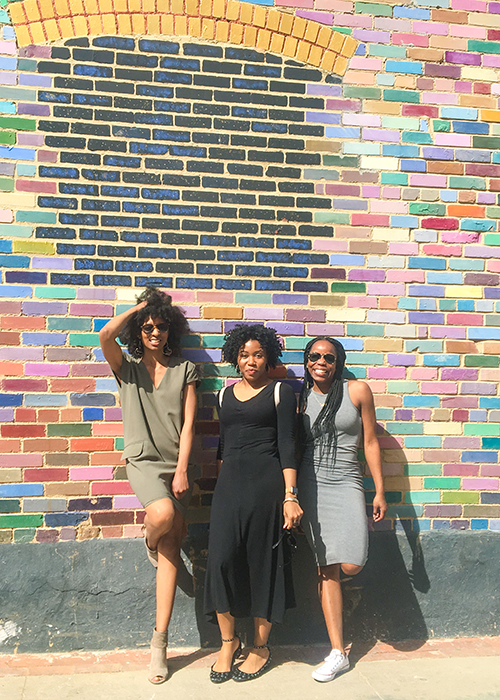
“It literally happened just that organically, from our jobs inspiring us to smoke, which inspired our entrepreneurial venture,” she says. The online venture began as a podcast, but after an infusion of funding from cannabusiness accelerator Canopy Boulder in 2017, EstroHaze has grown into “a full-fledged platform” aimed at “multicultural women.”
“We have seen the necessity for that voice in the space and it’s been empowering and supported and people seem to love it, so it’s growing,” Floyd says. “I think the necessity for it all has made it easier for women to kind of kick doors open and say listen, we’re here and this is what we’re doing, and you can cry about it if you don’t like it.”
Other publications, particularly those that publish a print magazine, tend to cast a wider net and write about topics adjacent to the cannabis industry. “I don’t think [smoking marijuana is] the most interesting thing about anyone I know,” Gossamer co-founder Verena von Pfetten told Coveteur before the launch of the magazine’s first issue in 2018. “We pick people to feature [who are] the type of person you want to be seated next to at a dinner party, whether you know them or not. Maybe they smoke weed, but not always.”
Broccoli, which publishes a magazine three times a year, utilizes a small network of contributors, mostly women and non-binary writers, and looks for people who want to share longform stories, as opposed to the bite-sized news that occupies much of the digital realm. In their last issue, they published a piece titled “To Be a Woman Is To Be In Pain,” in which four writers detailed their experiences using weed to treat various reproductive conditions — PMS, polycystic ovarian syndrome, endometriosis and morning sickness. In this way, Madewell says Broccoli looks to hold a mirror up to life events other publications have thus far neglected.
“We’ve heard from so many interesting, thoughtful readers from so many different places, and so many of them, that’s really their feedback: ‘You know, I haven’t had anything that felt like it was speaking to me,’” Madewell says. “It feels like a real privilege to be able to try and do that, and to listen to those voices and then try to reflect back stories and content and things that amplify their experiences.”
Fighting the Stigma
One of biggest hurdles for cannabis in general is the stigma that surrounds the plant, the aura of criminality and laziness that serves to vilify the plant and its users. It’s something the women behind and between the pages of these new cannabis publications still struggle with, especially in the image-conscious realm of women’s media.
“It was very hard to actually have women be open to be in the magazine or even be photographed in any way, shape or form with cannabis,” says Skog, who herself had previously vowed never to smoke weed on camera. “So many women have been really closeted for so long, and for us, much like the female cannabis plant, women have been dealing with being negatively stigmatized all over the world.”
Skog says she has lost former photography clients and faced judgment from members of her non-cannabis community because of her publication, but that she refuses to let that drive her away from the work.
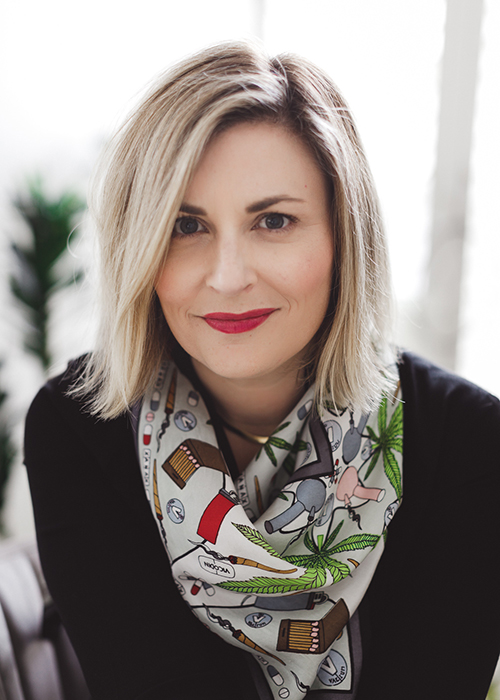
“I’m a soccer mom, I’m coming out of the closet still every day when I’m out with my kids, talking to parents, and so I think it’s awesome that so many women are kind of stepping up to the plate and wanting to take this on,” she says.
For Floyd and EstroHaze, the drive to destigmatize cannabis is two-fold. She says they work to fight off not only misconceptions about cannabis among women, but also those held in the black community.
“These aren’t drugs, you know what I mean? We’ve had that narrative so long in the African American community that we’ve kind of succumbed to it,” she says. “We’ve been so hardened by cannabis [prohibition] for so many years and now it’s really an opportunity to snatch our power back, and we’re trying to empower our community to do so.”
I’ll Have What She’s Having
But despite the air of optimism from women at the frontlines of cannabis media today, McDonough cautions against celebrating too soon — or buying in too quickly.
“People definitely want to promote female-owned companies and draw attention to those responsible businesses that are empowering not only women but people who have been disadvantaged by prohibition,” McDonough says. “But then when you look at who’s getting all the money and who’s getting all the funding, it’s still kind of the same people.”
She also says she’s been disappointed to see capitalism’s creep into cannabis media, a complaint often leveled at more traditional women’s media as well.
“When I see products targeted towards women that are very stereotypically designed to be pink or to be covered in jewels, or to be just promoting this kind of consumerism as a means to your own enlightenment, I think is kind of a false trap,” McDonough says.
This is not to say the push for consumerism is limited to women’s cannabis products. But there’s a fine line between feeling called to build up a special sense of connectivity and calling it like it is: the people who read and subscribe to a magazine are audience members, or more bluntly, customers.
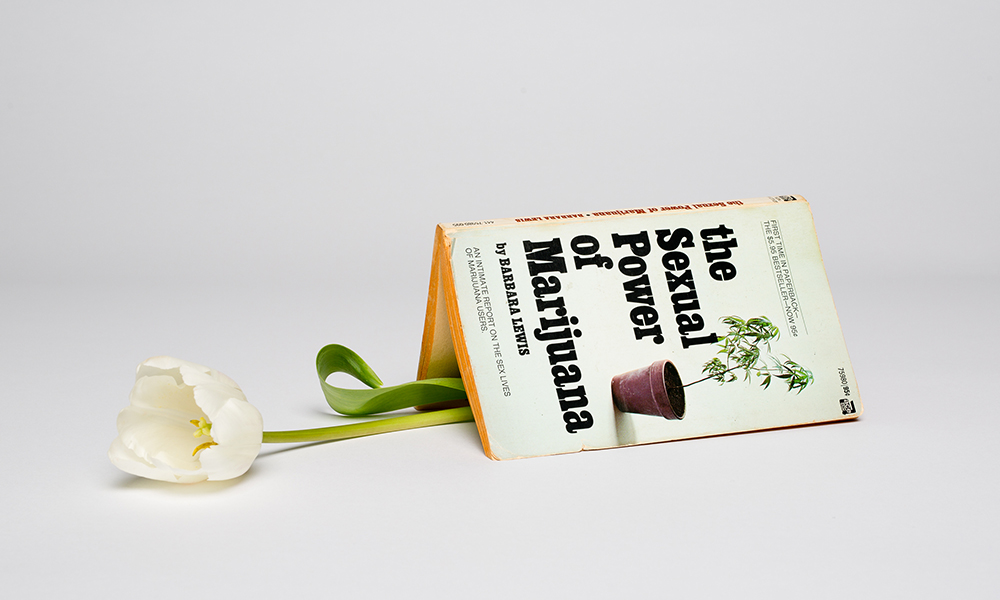
And it’s no coincidence that many of these publications offer more than just content. Take Gossamer’s “Dusk” CBD line, the $79 pipe necklaces Miss Grass sells on their website’s “Shop” section or the In Bloom music festival hosted by Broccoli with $275 weekend passes. This isn’t a gotcha moment: It’s a reflection of the modern media landscape, where even the most progressive publications have to sell products to survive.
The latter offering, however, exemplifies a phenomenon McDonough finds promising: events where female cannabis enthusiasts can meet up and enjoy our new, more relaxed legal reality. “It’s not about buying fancy glittery vape pens, it is about finding female friends to smoke with and chill with and build a community, versus just buying products,” she says.
Speaking about In Bloom, Madewell echoed McDonough’s appreciation of community building.
“One of the things I hope for is that people who are responding to some quality in the magazine then come to a place and they’re in a room with other people who are also responding to some quality in the magazine and then that sense of commonality, it creates a foundation for people to build whatever they want, whether that’s friendships or connections or whatever may be,” she says. “It’s sort of a lovely thing to give people the opportunity to grow communities in that way.”
But whether you’re a woman pushing for equity in the cannabis industry or you just want to know where to buy the cutest rose gold vape pen, the abundance of female-focused cannabis publications reflects and heightens the reality that the role of women in the cannabis industry has been shifting for a long time.
“For all of us women, for us to be having this real culture that we have and really just elevating the space is kind of magical,” Skog says.
Even High Times stopped publishing the titillating magazine covers, long before any of these new entities hit the scene. “[Our] publisher’s attitude always was, we will do this as long as it sells, and when it doesn’t sell, we won’t do it anymore,” McDonough says. “And let’s say like… 2008 to like 2010, you really saw that type of content not sell anymore. They stopped putting sexy women on the cover when it was no longer a successful strategy.”
TELL US, what’s your favorite cannabis publication?
Originally published in Issue 37 of Cannabis Now. LEARN MORE



